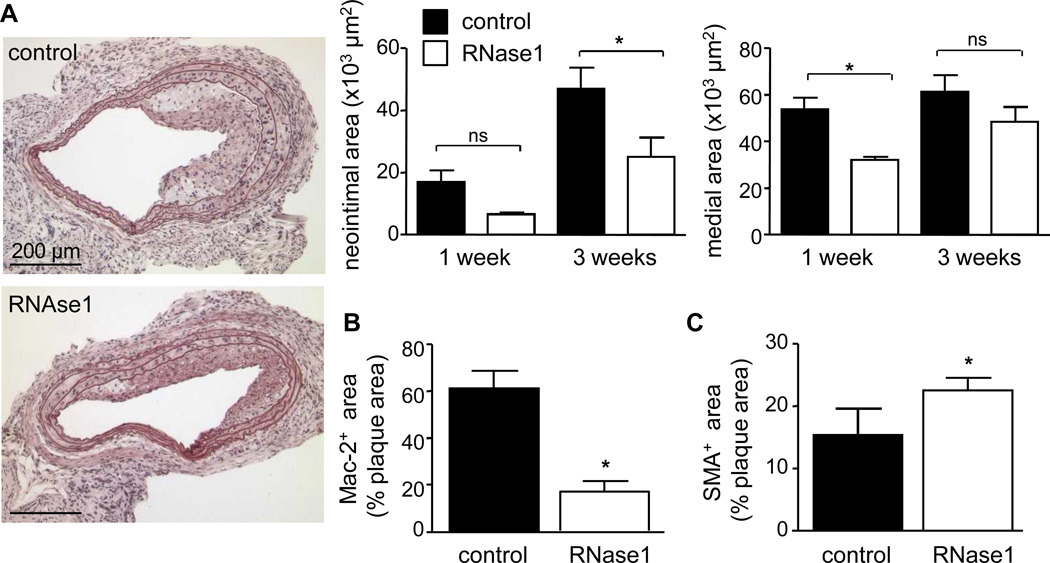Figure 5.
RNase1 treatment of atherosclerosis-prone apoE−/− mice protects from neointimal plaque formation. (A-C) ApoE−/− mice fed a high fat diet and treated vehicle (PBS, filled bars) or RNase1 (open bars) were subjected to wire-induced injury of the common carotid artery. Neointimal and medial areas were assessed 1 week (n=3 per group) and 3 weeks (n=7–8 per group) after injury. Values represent mean ± SEM; *p<0.05; ns = non-significant. Representative images of pentachrome-stained sections at 3 weeks after injury are documented (A). Quantification of the relative content of Mac-2-positive neointimal macrophages (B) as well as α-SMA-positive SMC (C) are indicated in the control group (filled bars) as compared to the RNase1-treatment group (open bars) 3 weeks after injury. Values represent mean ± SEM; *p<0.05.

